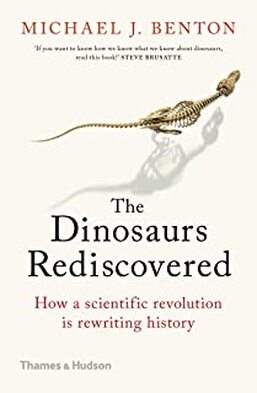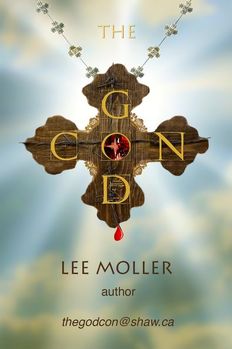 I liked this book. At times, I felt adrift in a sea of Latin names. Here is just one tiny example. The full classification of Deinonychus (the actual star dinosaur of Jurassic Park) is Sauraschia: Therpoda: Maniraptora: Dromaeosauridae. It takes a bit of getting used to. The book opens with a brief discussion of what science actually is (i.e. scientific philosophy). This is important these days in that relatively few people understand what "science" actually is. It is not certainty. Certainty can only be found in mathematics and (falsely) religion. It troubles me when people say "science doesn't know everything" and then leap frog from that obviously true and trivial statement, to assert something stupid, like the Earth is only 6,000 years old. Here is the shortest definition of the noun "science": It is what we know to be probably true. Some science is cast in stone (i.e.: the probability of it being true is near unity); and most science is in some degree of debate. No science can be said to be proven, but all science can be disproven. The verb "science" is harder to describe, and I will not even try here. The book was written in 2019 and therefore is a very up-to-date picture of dinosaur paleontology. Our understanding of dinosaurs (now called "birds") has advanced by leaps and bounds during my life time. For example, we now know that most theropods (like Deinonychus and T-Rex) had feathers, and we even know what color those feathers were. That is remarkable. During the Triassic, there were four groups struggling for dominance: Synapsids, Rhynchosaurs, Archosaurs, and Dinosaurs. The oldest dinosaurs date from 245 mya. Most dinosaurs disappeared about 65 mya. Dating techniques have improved dramatically from the 1970s, going from +/- 5% to +/- .05%. Computer power is being used to classify dinosaurs and separate them from other animals and from themselves. Gobs of computer power, in fact. This has created the "cladistic revolution" which has produced a much more accurate family tree for the dinosaurs (and other creatures). Computing has also advanced our understanding of how dinosaurs moved and ate. Gate and stride analysis (for movement) and stress analysis (for bite strength). The latter uses something borrowed from engineering: Finite Element Analysis (FEA) which is used to model stresses in structures like buildings and bridges. CT scans have allowed researchers to look inside fossilized eggs and to peel apart the internal structure of dinosaur bones. Aside: Bones are made from collagen. Collagen alone makes cartilage. Add needles of apatite (calcium phosphate) to the collagen, and you get bone. I mentioned that recent research has been able to tell us what color dinosaurs were by looking at melanosomes: sacs which contain melanin, the protein in skin that gives it color. Different color melanosomes have different shapes. So we can say they such and such dinosaur had a two long tail feathers and they were orange. Chapters are devoted to topics like: what they ate; how they moved or ran; can we recreate them a la Jurassic Park (no, we can't); sexing dinosaurs, how they died off, and so on. Bite strength determines a lot about how dinosaur fed. The Great White Shark has the highest bite force in the world today: about 18,000 newtons (about 2 tonnes). T-Rex' s bite was between 37,000 and 57,000 newtons (3.6 to 5.8 tonnes) . Around the turn of the century (i.e. 1850 to 1910), dinosaurs were badly misunderstood. Iguanodon, one of the first full skeletons ever found, was portrayed as a 61 meter (200 feet!) long lizard that flopped about on its belly. If you went to the Crystal Cathedral at the time, you could have dinner inside a model of Iguanodon (in the belly of the beast). Later versions of dinosaurs had them dragging their tales behind them on the ground, or walking about largely submerged. The modern vision is quite different. One of the most remarkable of science crossovers was the solution to the question of the fate of the dinosaurs. A physicist named Luis Alvarez, and his son Walter, proposed and ultimately proved the asteroid impact theory at Chicxulub (pronounced Chick-zu-loob) in the Yucatan peninsula. This impact tossed millions of tons of dust into the air, creating a kind of nuclear winter around the world. Almost all life on Earth was impacted (no pun intended). This theory was not well received. Charles Lyell's "gradualism" was in, and catastrophism (which had Biblical overtones) was out. Bob Bakker is a well known, brilliant paleontologist. I have seen him defend his many ideas with great energy several times over the years. I was always a bit turned off by him, in that he lacked humility. On the impact theory, he said: "The arrogance of those people is simply unbelievable. They know next to nothing about how real animals evolve, live, and become extinct. But despite their ignorance, these geochemists feel that all you have to do is crank up some fancy machine and you have revolutionized science." The arrogance of Bob Bakker is practically oozing out of this statement, which was, of course, spectacularly wrong. The asteroid impact idea did change things. It raised abandoned theories about Nemesis (a postulated nearby star) and a Planet X (X for ten). But today, we are actively looking for, and deciding what to do about it, objects that might impact Earth and wipe us all out. Feathers are now an accepted part of many dinosaur's make up. The evolution of flight is discussed in the book. A most interesting topic. And as I suggested, if you want to see a real live dinosaur, you need look no further than out your window. Birds are the living descendants of the dinosaur era. If you are really interested in the biological history of the planet, then I recommend this book. It is very up-to-date on current thinking, which is rare in the genre. It has a lengthy "Further Reading" section.
0 Comments
Leave a Reply. |
AuthorLee Moller is a life-long skeptic and atheist and the author of The God Con. Archives
May 2024
Categories
All
|

 RSS Feed
RSS Feed